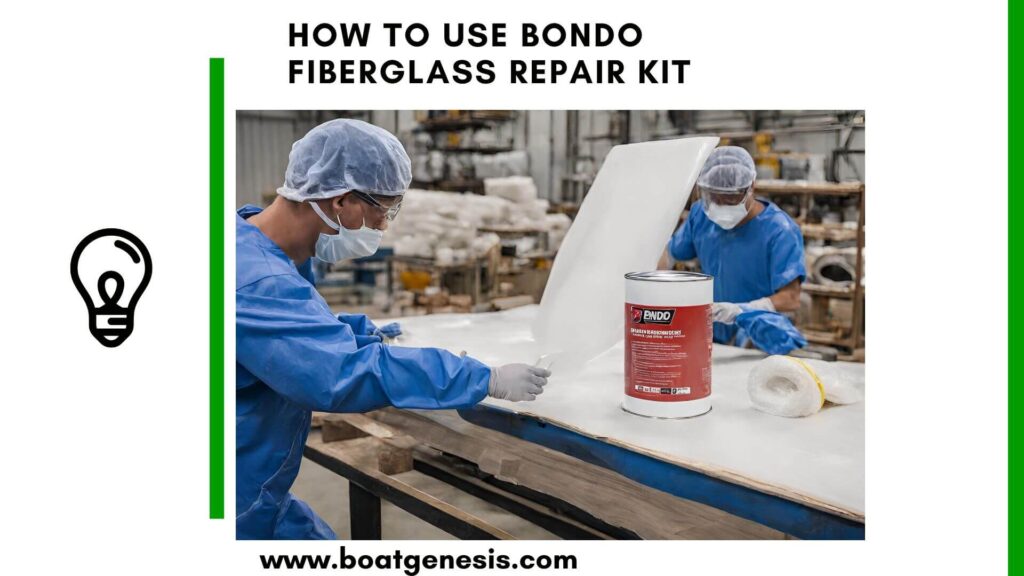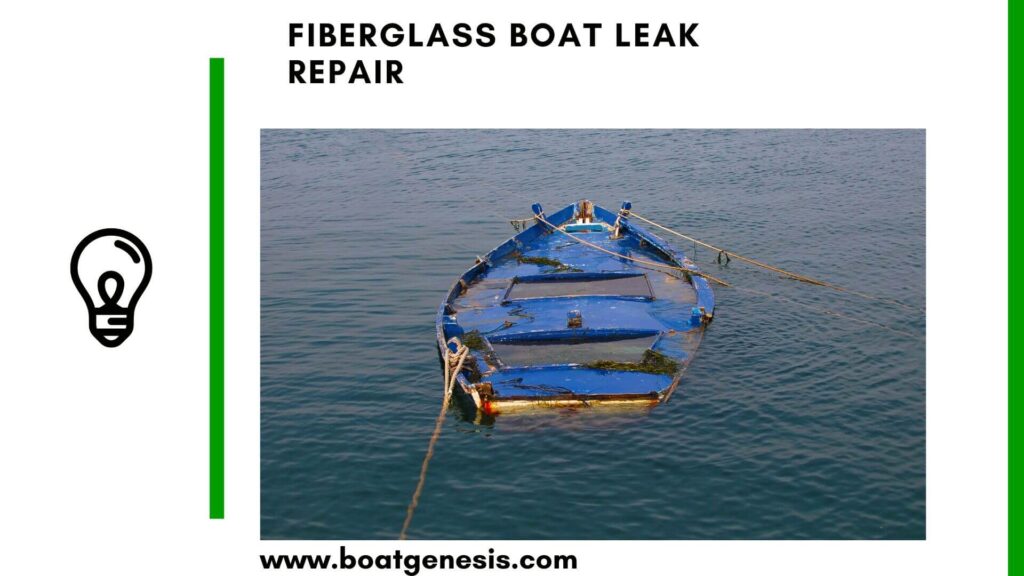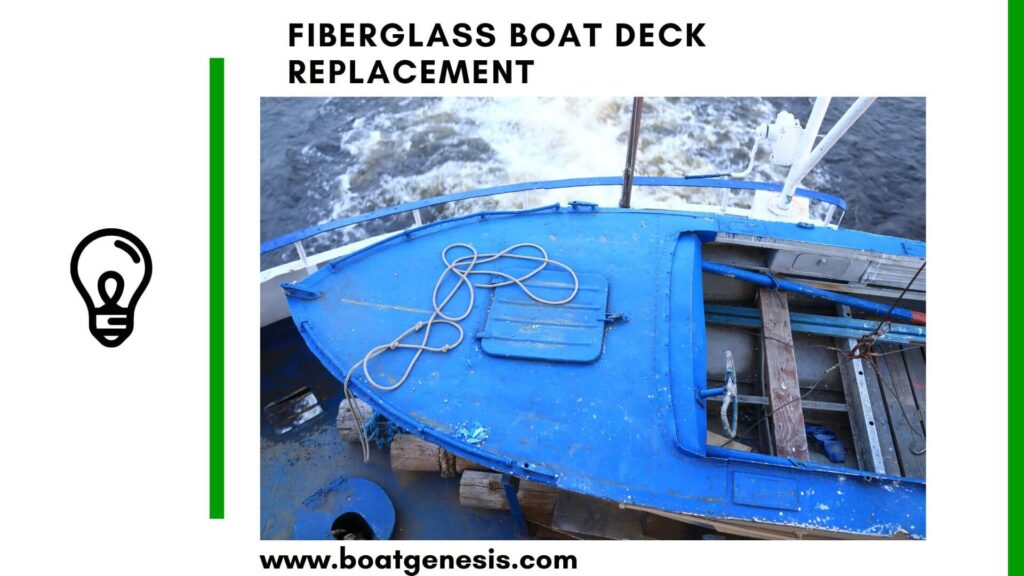When faced with cracked, broken, or rusted automobile body components, the Bondo Fiberglass Repair Kit presents itself as a practical solution for auto body repair.
This kit allows you to mend these issues efficiently and affordably, circumventing the costly option of part or panel replacement.
Its components are designed to work together to provide a sturdy repair that, when executed correctly, may restore the integrity and appearance of your vehicle.
In this article, I will guide you through the process of using the Bondo Fiberglass Repair Kit to fix your damaged surfaces.
How To Use Bondo Fiberglass Repair Kit?
Before attempting any repairs with the Bondo Fiberglass Repair Kit, it’s crucial to take the necessary safety precautions, gather all the required materials, prepare the surface correctly, mix the Bondo resin properly, and cut the fiberglass cloth to size.
==>> You might also be interested in reading my Bondo fiberglass repair kit review here.
1. Gathering Materials

Acquire all the necessary items before you start. You’ll need some essential tools for the task:
- Body filler
- Fiberglass resin
- Hardener
- Mixing tray
- Plastic spreader
- Mixing stick
Make sure you have these tools within reach to ensure a smooth and uninterrupted repair process.
2. Safety Precautions
When using the Bondo Fiberglass Repair Kit, it is important to take the following safety precautions:
- Wear gloves and safety glasses to protect the hands and eyes from the resin and hardener.
- Work in a well-ventilated area to avoid inhaling the fumes from the resin and hardener.
- Do not smoke or use open flames near the resin and hardener as they are flammable.
- Follow the instructions carefully and mix the resin and hardener in the correct proportions.
- Dispose of any unused resin and hardener according to the manufacturer’s instructions.
3. Assess the Damage
Before beginning, thoroughly examine the fiberglass to determine the extent of the damage. Look for cracks, holes, soft spots or delamination.
This inspection allows you to formulate a repair plan accounting for all issues. Measure any problem areas to help calculate material needs.
4. Prep the Area
Use 80 to 120 grit sandpaper to rough up a 2” perimeter around the damaged section, feathering as you expand outward.
This ragged edge provides ample texture to bind with repair materials. Blow away or vacuum dust. Wipe with a tack cloth.
5. Mix the Repair Material
The Bondo kit contains a lightweight filler and cream hardener. In a disposable container, measure equal parts of both components and stir thoroughly for 2-3 minutes.

This triggers the hardening process, so only mix what you can apply during the viable working time.
6. Apply in Layers

Utilize a body filler applicator to transfer the mixture over the damaged fiberglass area. Level with a spreader. Allow 10-15 minutes between thin layers.
Apply at least two coats, allowing the finale to slightly overfill. Let cure per packaging directions.
==>> See my recommended top fiberglass repair kits here.
7. Use Fiberglass Cloth for Significant Damage
For holes, large cracks or extensive delamination, the Bondo kit includes fiberglass cloth to provide extra reinforcement.
After prepping the area, mix resin per instructions and apply a layer using a disposable brush. Embed tapes of the cloth, pressing firmly so it absorbs resin.
Use the brush to fully saturate the fabric. Add another thin coat of resin over top. Let it begin curing before mixing the filler and applying it over the cloth as outlined above.
The fiberglass cloth aids repairs by:
- Spanning gaps or holes too large for filler alone
- Providing structural reinforcement for weakened areas
- Preventing cracks or damage from spreading
- Adding stability on corners/rounded edges
- Maximizing strength when delamination encompasses a large section
This integral cloth, combined with the lightweight filler, enables you to rebuild significant fiberglass defects for a lasting fix.
Use it whenever the damage extends across a wide span or reflects extensive underlying compromise of the composite beneath gelcoat.
The steps above outline seamlessly integrating the cloth into the repair process for robust, revitalized fiberglass.
You might also be interested in reading my full guide on how to use any type of fiberglass repair kit here.
8. Sand and Finish
Once fully hardened, contour with 80-120 paper to blend with surrounding fiberglass. Avoid over-sanding. The thinner the layer, the better.
Finish by priming and painting per your specifications.
==>> Read my article about sanding a boat gel coat here.
9. Finishing Touches
After successfully applying the Bondo Fiberglass Repair Kit to the damaged area, it’s crucial to apply the finishing touches to ensure a seamless and professional appearance.
These final steps involve applying primer, along with precise painting and polishing, to match the existing surface.
A/Applying Primer
Before you begin painting, it’s imperative to apply a primer to the repaired area. This will help the paint adhere better and provide a uniform surface for the topcoat.
- Ensure the repair area is clean and dust-free.
- Shake the primer can vigorously for a couple of minutes.
- With a steady hand, apply the primer using even, sweeping motions. Maintain a distance of about 8-10 inches from the surface.
B/Painting and Polishing
Once the primer is dry, you can move on to painting. Choose a paint that closely matches your vehicle’s color for a consistent look.
- Apply the paint in several thin layers, allowing it to dry between coats.
- After the final coat has dried, you can polish the area to a high shine using a soft cloth and automotive polish.
Utilize these techniques to achieve a durable and virtually undetectable repair that restores the appearance of your vehicle.
For a concrete example of the application process and a visual demonstration, references such as this Bondo fiberglass repair kit review can be particularly helpful.

Founder of BoatGenesis, Warren has hands-on experience in fiberglass boat repairs, marine equipment testing, and powerboat building. Learn more about Warren.




